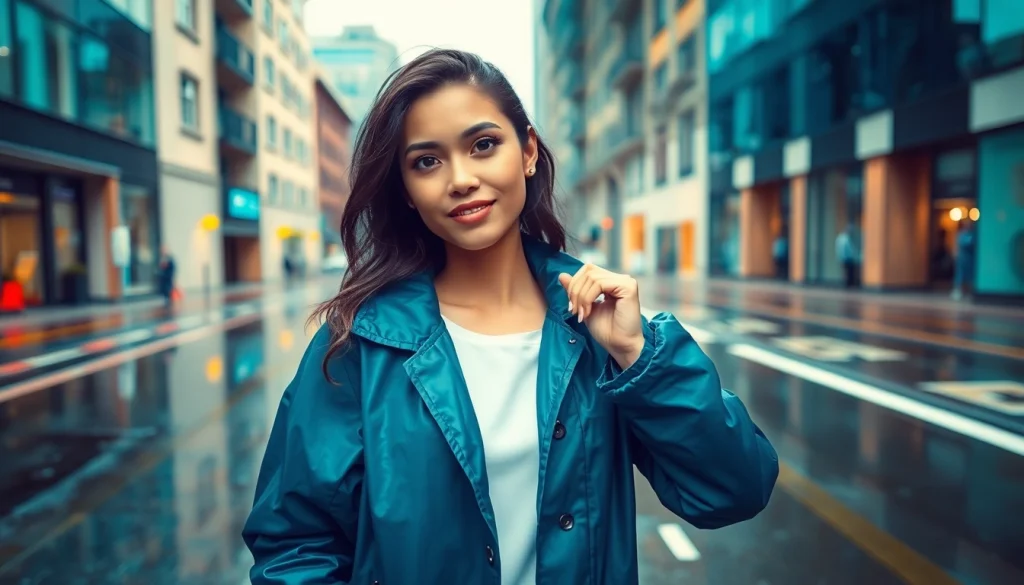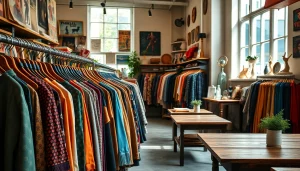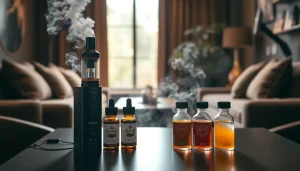Choosing the Perfect Raincoat: A Guide to Style, Function, and Sustainability

Understanding the Importance of a Raincoat
The unpredictable nature of weather can turn a pleasant day into a soggy mess in a matter of minutes, emphasizing the need for reliable outerwear. A quality raincoat serves as more than just a shield against rain; it’s a crucial component of a well-rounded wardrobe. This guide explores the multifaceted importance of raincoats, helping you understand why investing in a quality piece is essential.
Why Every Wardrobe Needs a Quality Raincoat
Every wardrobe should contain versatile staples that cater to a variety of scenarios, and a raincoat is one of them. Not only does it protect against inclement weather, but it also enhances your overall style. In regions where precipitation is commonplace, having a quality raincoat ensures you remain dry and comfortable while out and about. This adaptability is particularly valuable during transitional weather seasons, where sudden rain showers can occur unexpectedly.
Additionally, a well-chosen raincoat complements your personal style. Available in various colors, patterns, and silhouettes, raincoats can be both functional and fashionable. From bright colors that make a statement to sleek, neutral tones that pair easily with any outfit, the options are plentiful. This dual functionality enhances the value of a raincoat and justifies its place within your wardrobe essentials.
How Weather Impacts Your Choice of Raincoat
Before purchasing a raincoat, consider the climate where you reside. The frequency and intensity of rainfall can significantly influence both the type of raincoat you should choose and the features it should possess. In areas with light, sporadic drizzles, a packable, lightweight raincoat may suffice. However, if you live in a region known for heavy downpours, investing in a more robust raincoat made from waterproof materials is crucial.
Fabric Technology: Raincoats come in various materials, including polyester, nylon, and GORE-TEX. Understanding how these fabrics perform under different weather conditions helps you select the most effective option against water and wind. For instance, GORE-TEX provides superior waterproofing while remaining breathable—a perfect combination for heavy rains.
Moreover, insulating layers may be essential if you live in colder climates. A raincoat with an added thermal lining can provide protection from both moisture and cold temperatures. Factoring weather variability into your selection process fosters practical long-term use and comfort.
Raincoat Versatility: From Casual to Formal
The stylish versatility of a raincoat is another compelling reason to incorporate it into your wardrobe. Whether you are dressing casually for a day out or attending a formal event, there are raincoat styles to match any occasion. A tailored trench coat lends an air of elegance, making it a perfect choice for office wear, while a sporty anorak suits a more casual setting.
Layering is key to enhancing versatility; a lightweight raincoat can be worn over various ensembles, such as dresses or suits, seamlessly integrating into both casual and formal attire. Consequently, selecting a raincoat that can transition smoothly between styles maximizes its usability throughout various life scenarios.
Types of Raincoats: Finding Your Fit
With so many options available, finding the right raincoat can be overwhelming. Understanding the differences in styles and materials will guide you toward making an informed decision that meets your specific needs.
Classic Styles: Trench and Anorak Raincoats
When it comes to raincoat styles, two classic options stand out: the trench coat and the anorak. Each has unique attributes that cater to different preferences and fashion sensibilities.
The trench coat is characterized by its long length, typically falling below the knee, and features a double-breasted front. This classic design offers both elegance and practicality, making it a popular choice for urban dwellers. Often made from water-resistant fabric, trench coats are perfect for creating a polished look while keeping dry.
On the other hand, the anorak is a more casual option. Typically hip-length and often associated with outdoor activities, anoraks are designed to be lightweight and easy to pack. With a pullover style and a hood, they offer functionality that is great for spontaneous adventures without sacrificing comfort.
Material Matters: Selecting the Right Fabric for Your Raincoat
Choosing the right fabric for your raincoat is essential for optimizing performance. Different materials exhibit varying degrees of waterproofing, breathability, and durability. Below are some popular materials:
- Nylon: Known for its light weight and ability to repel water, nylon raincoats are often ideal for lighter showers and are popular for their packability.
- Polyester: Typically more durable than nylon, polyester offers excellent resistance to abrasion and can often be treated with water-repellent compounds.
- GORE-TEX: This highly advanced fabric is waterproof and breathable, ideal for those who need a raincoat during rigorous outdoor activities.
When selecting a fabric, consider the climate and typical activities during which the raincoat will be worn. Understanding how each material performs will prevent discomfort and enhance the practicality of the raincoat in question.
Sizing and Fit: Ensuring Comfort and Functionality in Your Raincoat
Finding the right fit is critical when purchasing a raincoat. Ill-fitting coats can hinder movement, decrease comfort, and ultimately lead to dissatisfaction. Here are a few tips for ensuring a proper fit:
- Try Before You Buy: Whenever possible, try on the raincoat over layers to gauge fit and comfort.
- Consider Movement: Raise your arms and bend down to see how the coat moves with you, ensuring that it does not restrict your maneuverability.
- Check Length: Tailored raincoats should ideally end above the knee, offering a balance between style and rain protection, while longer styles may be necessary for colder weather.
Additionally, consider adjustable features such as cinched waists or adjustable sleeves that can enhance comfort and functionality. A good fit will allow you to layer underneath, ensuring you stay warm and dry while looking great.
Stylish Raincoat Trends to Watch
The fashion industry continually evolves, and raincoat styles are no exception. Staying updated on current trends can enhance your style quotient while ensuring you select a raincoat that integrates seamlessly into your wardrobe.
Current Colors and Patterns in Raincoat Fashion
Gone are the days when raincoats were limited to dull colors and basic designs. Modern raincoat fashion embraces a variety of colors and patterns that appeal to diverse tastes. Bright, bold colors are trending, allowing you to make a statement even on the wettest of days. Popular shades include vibrant yellows, reds, and greens, aimed at injecting fun into a dreary forecast.
In terms of patterns, floral designs, geometric prints, and color-blocking are gaining traction. These styles allow you to express your personality while benefiting from the essential functionality of the raincoat. When choosing a pattern, ensure it aligns with your existing wardrobe to maintain coherence across your outfits.
Eco-Friendly Raincoat Options: Sustainable Choices
Sustainability has emerged as a key consideration in fashion, and the raincoat sector is no different. Many brands are now producing raincoats made from recycled materials or eco-friendly fabrics. Investing in an environmentally-friendly raincoat not only helps reduce waste but also supports brands prioritizing sustainable practices.
Moreover, many sustainable raincoats still incorporate advanced water-resisting technology, ensuring you don’t have to sacrifice performance for the sake of sustainability. As consumer awareness continues to grow around eco-friendly products, this trend is likely to evolve further, making it increasingly easier to make responsible fashion choices.
Accessorizing Your Raincoat for a Complete Look
The right accessories can elevate the functionality and aesthetic appeal of your raincoat. Consider items such as matching umbrellas, waterproof bags, or stylish rain boots to complement your look. Accessories add a stylish flair while maintaining practicality during adverse weather conditions.
Moreover, layering with scarves or hats not only enhances your outfit but contributes to warmth during colder, rainy days. The added versatility of mixing and matching accessories can allow for a fresh look every time it rains, maximizing the use of your raincoat.
Maintenance Tips for Your Raincoat
Proper maintenance is crucial for ensuring your raincoat serves you well for years to come. Understanding how to care for your garment can significantly influence its durability and performance.
Proper Cleaning Techniques to Enhance Durability of Your Raincoat
Regular cleaning keeps your raincoat free from dirt and grime, prolonging its life. Follow manufacturer guidelines, but generally, most raincoats can be machine washed on a gentle cycle. Always use a mild detergent and avoid fabric softeners that can compromise the integrity of waterproof coatings.
Furthermore, some raincoats benefit from a periodic reapplication of Durable Water Repellent (DWR) finishes, which can diminish over time. Using a spray or wash-in treatment can restore water resistance, ensuring your raincoat remains effective against moisture.
Storage Solutions for Longevity of Your Raincoat
Where and how you store your raincoat impacts its longevity. Store your raincoat in a cool, dry place away from direct sunlight to prevent fading and degradation of materials. Hanging the coat on a hanger can help maintain its shape, while keeping it in a breathable garment bag prevents dust accumulation.
Avoid cramming your raincoat in tight spaces, as this can lead to creasing and damage. By ensuring proper storage practices, you can protect your investment and keep your raincoat in optimal condition for years.
Common Repairs to Keep Your Raincoat in Top Shape
Even with the best care, wear and tear are inevitable. Being proactive about common repairs can help you extend the life of your raincoat. Small tears can often be fixed with fabric patches specifically designed for outdoor gear. If the seams start to fray, re-sealing them with seam sealant can restore waterproofing.
For more significant damages such as broken zippers or malfunctioning snaps, professional repairs may be necessary. Seek out a tailor or a local outdoor gear repair shop that can competently handle these issues. Investing in repairs often pays off by prolonging the overall life of your raincoat.
Making an Informed Purchase: What to Consider
Choosing the right raincoat involves careful consideration of various factors to ensure you obtain a product that aligns with your needs, style, and budget. Thoughtful purchasing can lead to satisfaction and longevity in your investment.
Budgeting for a Quality Raincoat Without Sacrificing Style
Quality does not always have to equate to high costs, but it’s important to set a budget that allows for a solid investment without compromising on features. A range of price points exists, and understanding what that budget encompasses is crucial. Look for features that matter: waterproofing, breathability, and material quality.
Sales and discounts can also present excellent opportunities for acquiring a high-quality product at a lower cost. Maintaining flexibility in budget can guide you toward a purchase that feels both affordable and worthwhile long term.
Top Features to Look for in Your Ideal Raincoat
When evaluating raincoats, consider critical features that enhance usability and comfort. Here are some essential elements to focus on:
- Waterproofing: Look for fabrics that are rated as waterproof rather than water-resistant, ensuring maximum protection.
- Breathability: Essential for comfort, breathable materials allow moisture from sweat to escape, keeping you dry inside the coat.
- Hoods: A hood can provide added protection from rain without the hassle of an umbrella.
- Pockets: Functional pockets allow for storage of essentials, providing convenience on the go.
Ultimately, a thorough understanding of what feature sets best serve your needs can lead to a more satisfying purchase experience.
Where to Buy: Selecting Retailers for Your Raincoat Purchase
Where you buy your raincoat can influence several factors, including quality assurance, return policies, and customer service support. It’s often advisable to purchase from reputable retailers known for their commitment to quality outdoor gear. Look for retailers that offer a range of price points and styles to ensure that you can try on different options and find your perfect fit.
Examine customer reviews and experiences to gauge product satisfaction prior to purchasing. This step can build confidence in your decision and ensure that issues are minimized down the line. Overall, being informed about your options grants peace of mind with your chosen investment.





